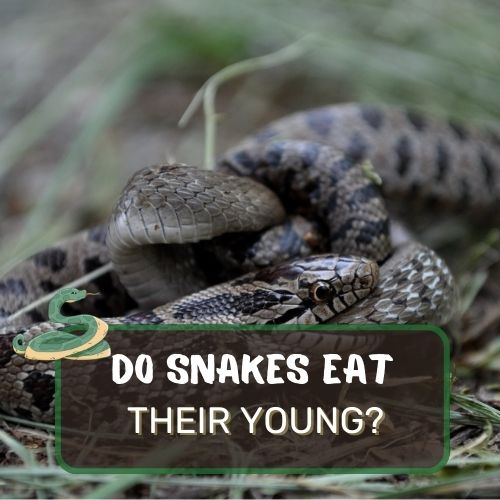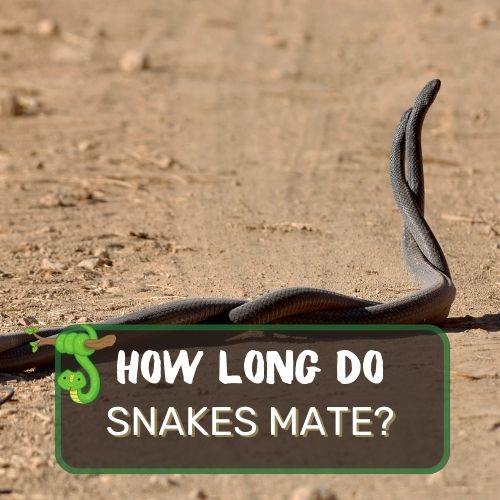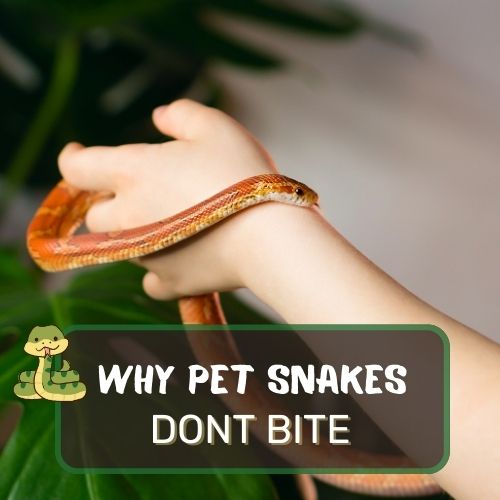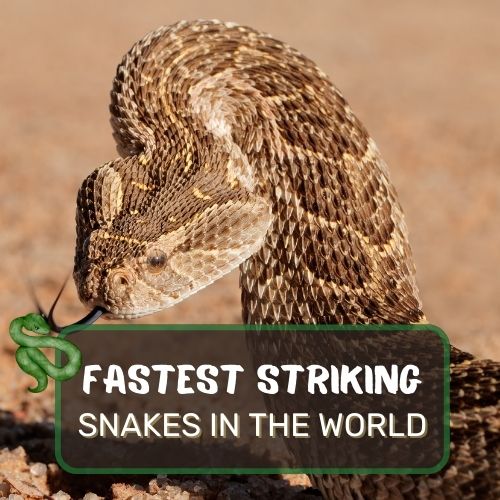
In this article, we delve into the captivating world of snakes to uncover the truth behind a fascinating question: “Do snakes eat their young?”
Drawing upon comprehensive research and expert insights, we explore the factors influencing maternal behavior in snakes and shed light on the circumstances under which such unusual practices may occur.
By reading this piece, you will gain a deeper understanding of the complexities of snake reproduction, the role of maternal instincts, and the adaptive advantages that cannibalism may have in certain snake species.
Get ready to embark on a captivating journey that unravels the mysteries of snake-parent dynamics and unveils the astonishing realities of survival strategies in the animal kingdom.
Table of Contents
- 1 Do Snakes Eat Their Young? (Short Answer)
- 2 Will Parent Snakes Eat Their Offspring?
- 3 Instances of Snakes Eating Their Young
- 4 Factors Influencing Maternal Behavior in Snakes
- 5 Is Maternal Care in Snakes a Myth?
- 6 Snake Reproduction and Offspring Care
- 7 Implications for Captive Snake Breeding
- 8 FAQ
- 9 Conclusion
Do Snakes Eat Their Young? (Short Answer)
No, snakes do not typically eat their young. Most snake species show little to no parental care after laying eggs or giving birth, and they leave the offspring to fend for themselves. However, they don’t actively seek out their young as a food source. That said, snakes are opportunistic predators, and if a young snake were to cross paths with a hungry adult snake of a different species, it could potentially be eaten. It’s also worth noting that some snake species, like the king cobra, display protective behaviors towards their nests, ensuring the safety of their eggs from potential predators.
Will Parent Snakes Eat Their Offspring?
Now, let’s address the central query that has piqued our curiosity – do snakes indeed eat their young? The answer may surprise you, as snake behavior can be remarkably diverse, depending on the species and environmental factors.
Variations in Snake Behavior
1. Ophiophagous Species
Certain snake species are categorized as ophiophagous, which means they primarily feed on other snakes. In such cases, the behavior of consuming their own young, known as filial cannibalism, can be observed.
This may seem perplexing, but it serves a purpose in maintaining a balanced population and conserving resources.
One well-known example is the king cobra, which, although predominantly consuming other snakes, may occasionally exhibit cannibalistic tendencies.
2. Non-Ophiophagous Species
On the other hand, the majority of snake species do not primarily prey on other snakes. For these non-ophiophagous snakes, filial cannibalism is rare or entirely absent.
Instead, they invest their energy in protecting and nurturing their offspring to increase their chances of survival.
Such parental care ensures the continuation of their genetic lineage, contributing to the overall health of the species.
In the next section, we will explore more intriguing aspects of snake behavior, diving into the mechanisms that drive these contrasting strategies and the underlying factors that influence their choices.
Instances of Snakes Eating Their Young

Species Known to Eat Their Young
Among the intriguing array of snakes, some are known to exhibit the behavior of consuming their own offspring. Let’s take a closer look at two notable examples:
1. Vipers and Pit Vipers
Certain viper and pit viper species have been observed engaging in filial cannibalism. These snakes, typically ambush predators, primarily consume small mammals and birds.
However, under specific circumstances, they may also resort to consuming their own offspring, emphasizing the complex nature of their survival strategies.
2. King Cobras
The magnificent king cobra, known for its striking appearance and potent venom, is another fascinating species that sometimes demonstrates cannibalistic behavior.
While their primary diet consists of other snakes, rodents, and lizards, they have been documented consuming their own young when resources are scarce.
Reasons for Cannibalism

1. Lack of Available Prey
One significant reason for filial cannibalism in snakes is the scarcity of traditional prey items.
When food sources are limited, especially in challenging environmental conditions, some snake species resort to consuming their own young as an alternative source of sustenance.
This seemingly harsh behavior ensures the survival of the parents while minimizing competition for scarce resources.
2. Overpopulation
In densely populated snake communities, overpopulation can lead to intense competition for resources.
Under these circumstances, adult snakes may perceive their own offspring as competitors, and consuming them becomes a strategy to regulate population numbers and maintain ecological balance.
Factors Influencing Maternal Behavior in Snakes
Understanding the factors that influence maternal behavior in snakes provides valuable insights into their reproductive strategies and adaptations.
Role of Hormones
Hormonal fluctuations play a crucial role in shaping maternal behavior in snakes. During the breeding season, female snakes experience hormonal changes that trigger maternal instincts.
This leads to protective behaviors, nest-building, and nurturing of their offspring.
In contrast, when resources are scarce or environmental conditions are unfavorable, hormonal signals may encourage cannibalistic tendencies as a means of survival.
Environmental Factors
1. Availability of Food
The abundance or scarcity of food in a snake’s habitat significantly impacts their parental behavior.
When prey is plentiful, snakes are more likely to invest in maternal care, ensuring the survival of their young to maintain their genetic lineage.
However, in regions where prey is scarce, snakes may prioritize their own survival over that of their offspring, resulting in filial cannibalism.
2. Habitat Conditions
The environmental conditions in which snakes reside also influence their reproductive decisions.
Factors such as temperature, humidity, and the presence of suitable shelter can impact the likelihood of filial cannibalism.
In harsh habitats with limited resources, snakes may resort to consuming their young as a survival strategy.
Is Maternal Care in Snakes a Myth?
Misconceptions about Maternal Behavior
When it comes to snakes, there are several misconceptions surrounding their maternal behavior.
One common myth is that all snakes abandon their eggs or young immediately after laying or giving birth. This stereotype often paints snakes as cold and uncaring creatures, but the reality is far more intriguing and diverse.
Parental Involvement in Snakes
Contrary to popular belief, many snake species do exhibit some form of parental care. While it may not resemble the care provided by mammals or birds, snakes do display behaviors that contribute to the survival of their offspring.
This includes activities such as nest building, brooding, and protecting the young until they are capable of fending for themselves.
Understanding these aspects of snake parenting sheds light on their complex and adaptive reproductive strategies.
Snake Reproduction and Offspring Care

Reproductive Strategies in Snakes
Snake reproduction involves fascinating strategies tailored to their ecological niche. Different species employ various methods, such as internal fertilization or egg-laying, depending on their evolutionary history and habitat conditions.
Some snakes lay eggs in carefully constructed nests, while others retain their eggs inside their bodies until the offspring are ready to emerge.
Offspring Survival Techniques
1. Hiding Strategies
One of the primary ways snake offspring increase their chances of survival is by adopting hiding strategies.
After hatching or birth, young snakes instinctively seek shelter in concealed spots, such as under rocks, within the foliage, or in burrows.
This minimizes their visibility to potential predators and increases their chances of evading danger.
2. Camouflage
In addition to hiding, many snake species possess excellent camouflage abilities. Their colors and patterns often mimic their surroundings, making it difficult for predators to detect them.
This natural adaptation allows young snakes to blend seamlessly into their environment, reducing the likelihood of being spotted by predators or even by their own cannibalistic parents.
Understanding these reproductive and survival techniques provides a deeper appreciation for the intricacies of snake life.
It also highlights the diversity of behaviors exhibited within the snake kingdom, dispelling the notion of a one-size-fits-all approach to their parenting strategies.
As we conclude this captivating journey into the world of snakes and their offspring, let us remember that their behaviors, though often mysterious, are the result of millions of years of evolution, perfectly attuned to their respective habitats and ecological roles.
Implications for Captive Snake Breeding

Risks of Housing Mother and Babies Together
In captive snake breeding scenarios, it’s essential to be mindful of the potential risks of housing the mother and her offspring together.
While some snake species may exhibit parental care in the wild, the same may not hold true in captivity.
In fact, certain snakes, even those that would care for their young in the wild, may perceive the confined space as stressful and react adversely.
In such cases, the mother might display aggressive behavior towards her offspring, leading to injuries or fatalities.
Additionally, keeping the young snakes with their mother could hinder their chances of finding hiding spots or accessing appropriate food.
Best Practices for Breeding Snakes
To ensure a successful and safe breeding environment for snakes in captivity, it is vital to follow best practices.
Firstly, provide adequate space and hiding spots for the female snake during the gestation or egg-laying period to minimize stress.
After birth or hatching, promptly remove the mother from the enclosure and transfer her to a separate area to avoid potential harm to the offspring.
For the young snakes, create a suitable habitat that allows them to hide effectively and establish their territories without competition or predation from adult snakes.
Adequate temperature and humidity levels should be maintained to support the healthy growth of the offspring.
FAQ
Here are some frequently asked questions about snake parental behavior:
Do Snakes Swallow Their Young to Protect Them?
Contrary to popular belief, snakes do not swallow their young as a protective measure. The act of swallowing their offspring is an example of filial cannibalism, which is more commonly observed in specific snake species under specific environmental conditions.
It is a survival strategy driven by factors like scarcity of food or overpopulation rather than a form of protection.
Do Snakes Eat Their Own Kind?
Yes, some snake species are known to be cannibalistic, meaning they may consume members of their own species. This behavior is usually seen in situations where resources are scarce, and snakes perceive each other as competitors for food or territory.
Do Snakes Care About Their Babies?
While snakes may not exhibit parental care in the same way mammals do, many species do display behaviors that contribute to the survival of their offspring.
This can include nest-building, brooding, and protecting the young until they are capable of fending for themselves. Their behaviors are shaped by instinct and evolutionary adaptations to their environment.
What Do Snakes Do with Their Babies?
After birth or hatching, snake offspring generally disperse and fend for themselves. They instinctively seek shelter and adopt hiding strategies to avoid predators. In some cases, if they encounter adult snakes, there is a risk of cannibalism if resources are limited.
By understanding these frequently asked questions and the intricacies of snake behavior, we can foster a greater appreciation for these remarkable reptiles and promote responsible captive breeding practices.
Conclusion
Throughout this captivating journey into the world of snakes and their parental behavior, we have uncovered a diverse range of intriguing insights. Let’s recap the key points we’ve explored:
Summary of Key Points
- Snakes exhibit a variety of reproductive strategies, including maternal care and filial cannibalism, depending on their species and environmental conditions.
- Ophiophagous snakes, such as vipers and pit vipers, and some non-ophiophagous species, like king cobras, are known to engage in filial cannibalism.
- The decision of whether to care for their young or consume them is influenced by factors like the availability of food, habitat conditions, and hormonal fluctuations.
- Contrary to the myth that all snakes abandon their offspring, many species do exhibit forms of parental care, such as nest-building and protecting the young.
- In captive breeding settings, caution should be exercised when housing mother snakes with their offspring to avoid potential risks of aggression or harm.
Implications for Snake Enthusiasts and Researchers
For snake enthusiasts, this exploration provides a deeper appreciation for the complexities of snake behavior and highlights the need for responsible practices in captive breeding.
Understanding the diverse strategies employed by different snake species fosters a sense of wonder and respect for these remarkable creatures.
For researchers, these insights offer a foundation for further investigations into the ecological and evolutionary implications of snake parental behavior.
Studying the factors influencing reproductive decisions can contribute to our understanding of species conservation and management.
In conclusion, the question “Do snakes eat their young?” unveils a multifaceted aspect of snake life. These creatures have evolved diverse strategies to navigate their environments and ensure their survival.
By embracing the wonders of nature and delving into the intricacies of snake behavior, we enrich our understanding of the fascinating world that snakes inhabit.




0 Comments